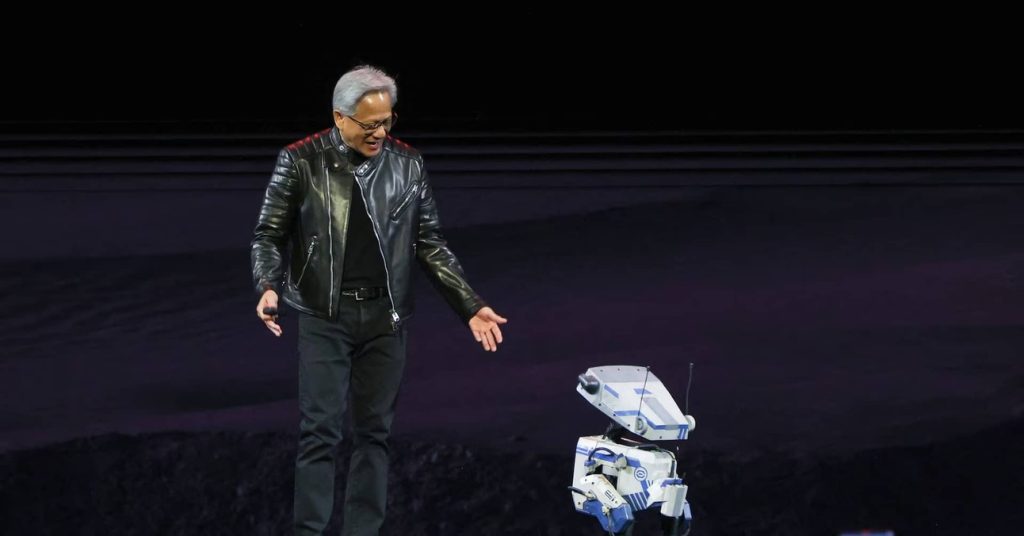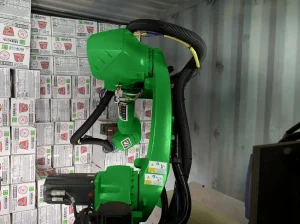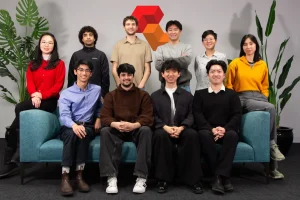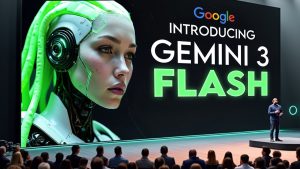Key Revelations from Nvidia’s GTC 2025

At the frontline of technological innovation, Nvidia’s GTC 2025 reveals groundbreaking strides in AI, robotics, and supercomputing. The excitement is palpable as CEO Jensen Huang passionately reaffirms the impactful potential of AI chips. These announcements not only push the tech envelope but redefine the possibilities across various domains.
Delving into a world where AI intertwines with everyday applications, Nvidia’s initiatives promise transformative changes. From powerful GPUs to collaborations with industry giants, the details unveiled showcase a future charged with potential. As attendees soak in the vision, the nexus of technology and innovation is vividly on display.
Revolutionizing GPUs
Nvidia’s roadmap introduces the Blackwell Ultra with 20 petaflops, set for release this year. Meanwhile, the Vera Rubin chip promising 50 petaflops by 2026, and Rubin Ultra targeting 100 petaflops by 2027, outline a future of unprecedented processing power. This marks a significant leap in computational capability for AI applications.
Pioneering Robotics
Nvidia’s Groot N1, an open-source AI model for humanoid robots, represents the dawn of a ‘generalist robotics’ era. With open accessibility, developers and researchers can innovate and expand capabilities. From factories to homes, these advancements hint at a future where robots integrate seamlessly into daily life.
Furthering this vision, Nvidia partners with Disney to develop Newton, a next-gen physics engine targeted for Disney parks. Debuting in 2026, this engine will enhance robot interactions, crafting immersive experiences for visitors. Such collaborations underscore a shared commitment to innovative entertainment.
Personal AI Supercomputers
Unveiling the DGX Spark and DGX Station, Nvidia introduces personal AI supercomputers. Built on Grace Blackwell chips, these units cater to individual AI needs, revolutionizing personal computing power. Jensen Huang highlights their potential to redefine computing in the AI age, making cutting-edge technology accessible to more users.
These supercomputers offer immense processing capabilities, tailored for high-demand tasks in AI research and development. Compact yet powerful, they are designed to handle complex operations typically reserved for larger setups. This democratization of power stands to pivot individual contributions to the tech landscape.
Moreover, their portability ensures that labs and researchers can effortlessly integrate these machines into existing setups. As more professionals gain access to such tools, the boundary between personal and professional computing blurs, fostering a convergence of creativity and capability.
AI in Automotive
Nvidia’s collaboration with General Motors taps into AI’s potential in self-driving vehicles. By enhancing robotics and manufacturing processes, this partnership aims to reshape factory floors and in-car experiences. It highlights a future where AI-driven automation boosts efficiency and safety in automotive contexts.
Such integration signals a shift in automotive innovation, focusing on AI as a core component of modern vehicles. By integrating smart systems, GM and Nvidia anticipate elevating product design and user interaction. This collaboration marks a milestone in merging automotive expertise with AI-driven insights.
Intriguingly, the incorporation of AI promises a synergy that improves not just assembly lines but also driving experiences. Enhanced safety features, predictive maintenance insights, and personalized in-car functions illustrate the partnership’s broad scope. As AI continues to refine vehicle design, the horizon looks promising.
Breaking Barriers with Collaborations
Joining forces with DeepMind, Nvidia embarks on developing next-gen technologies. Their joint venture, Newton, aims to revolutionize physics engines, benefiting fields like entertainment and real-world simulations. This highlights the importance of partnerships in advancing technological frontiers.
Through such collaborations, the boundaries of what’s achievable in technology expand, fostering rapid innovation. By pooling resources and expertise, these alliances drive innovations that might otherwise take longer to materialize. This cohesive effort amplifies the reach and impact of technological progress.
Collaborations like these not only enhance technological capabilities but also drive competitive advantage. As companies align objectives and resources, they create a synergy that accelerates development and deployment. Such strategic partnerships often result in breakthroughs that resonate across industries.
Expanding AI’s Influence with Automotive and Entertainment Partnerships
Through strategic collaborations with General Motors and Disney, Nvidia seeks to blend AI with both automotive and entertainment sectors. These partnerships aim to redefine how technology enhances user experience in diverse contexts, from factory floors to theme parks.
With General Motors, AI’s role in advancing car manufacturing and self-driving tech is explored. Meanwhile, Disney’s collaboration focuses on enhancing guest experiences through AI-driven physics engines, setting new standards in entertainment innovation.
These initiatives underline the growing influence of AI across multiple sectors, partnering with industry leaders to pioneer innovative solutions. They demonstrate a commitment to leveraging AI’s potential to create significant advancements that improve everyday experiences.
Shifting Paradigms in Computing
The unveiling of personal supercomputers, DGX Spark and DGX Station, marks a shift in computing power distribution. These high-performance systems aim to democratize computing, giving individuals unprecedented access to supercomputing capabilities.
These machines are not only powerful but also compact, enabling seamless integration into various settings. Their design targets affordability and user-friendliness, making cutting-edge technology more accessible to enthusiasts and professionals alike.
The potential applications span several domains, including research, education, and industry. By empowering individuals with these tools, Nvidia is fostering a fertile ground for innovation and development across different fields.
Imagining the Future of Technology
Nvidia’s GTC 2025 paints a picture of a future driven by AI and advanced computing technology. From supercomputers to AI-enhanced vehicles, the vision is clear: technology is positioned to redefine human capabilities.
Each announcement not only reflects technological advancements but also inspires future innovations. By pushing boundaries, Nvidia stimulates industry-wide momentum towards pioneering new solutions and improving existing frameworks.
Integrating AI into Everyday Life
With innovations in AI and robotics, Nvidia crafts a future where technology seamlessly blends with daily routines. From aiding in household chores to enhancing entertainment, AI’s potential is vast.
As technology evolves, Nvidia’s strides promise pragmatic solutions that simplify tasks. Through their initiatives, everyday applications of AI are poised to make life more efficient and enjoyable.
With each announcement, Nvidia underscores a bold leap into the future. Their vision, driven by pioneering AI and computing developments, promises to transform industries and daily life alike. The journey ahead is poised with potential, steering towards innovative horizons that redefine what’s possible in technology.





